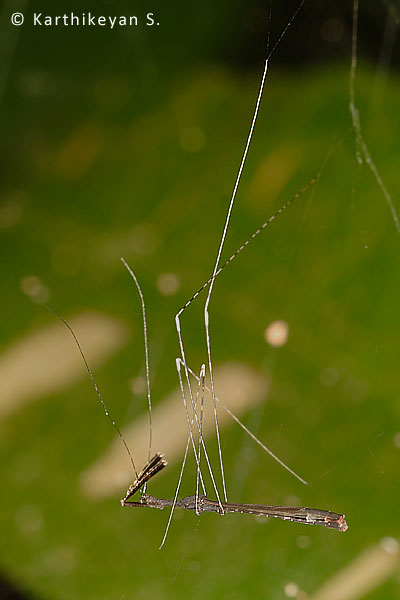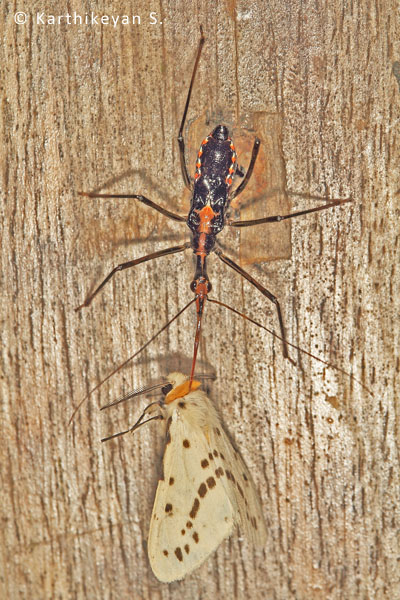It was during my second, albeit brief, visit to Port Blair that I got an opportunity to trek in the wilderness of the Andamans. The trek was from Shoal Bay to Madhuban. The distance that we had planned to cover was short, but it seemed to take forever to reach the destination. A multitude of small fascinating organisms kept vying for attention all along the way and this slowed us down enormously.
The ‘star’ of the trek turned out to be a weird and strange looking creature that we spotted on a spider web about 5 feet from the ground. It kept moving constantly, making it very difficult even to lock focus. It had a long body and even longer legs that were wiry. I could not venture very close to get all the details for fear of not seeing the complete insect in the frame. Three pairs of legs (the first set resembling those of a praying mantis); a pair of long antennae; it being on a spider web; all had me confused no end. It was only recently (after 3 ½ years!) that I managed to put a name to this enigma. It turned out to be what is popularly known as the ‘Thread-legged Bug’.
Very little is known about the Thread-legged Bugs. Though these bugs have a wide distribution, tropics have the highest diversity of species. These predatory insects are known to be nocturnal and they occur in a variety of habitats including spider webs. Some species are even known to steal prey caught in spider webs!
The Thread-legged Bugs belong to a much larger group of bugs called the assassin bugs (Family Reduviidae). This is a very diverse group of which there are around 6000 known species. All assassin bugs, as one would expect, are predators. They are characterised by the presence of a very prominent ‘beak’.
The beak is used to pierce the prey and inject saliva thereby paralysing them. The saliva helps in digesting the contents of the prey. Subsequently, the assassin bug sucks the contents leaving behind an empty shell! This behaviour is what gives them their name.
Assassin bugs are known to occur over most parts of the world. Though I have often seen assassin bugs, it came as a surprise when I learnt that the Thread-legged Bug occurs even in cities – it can be seen in and around Bangalore too. So keep a watch around you and when you do encounter one, you may do well to leave it alone since assassin bugs can deliver a painful bite!

